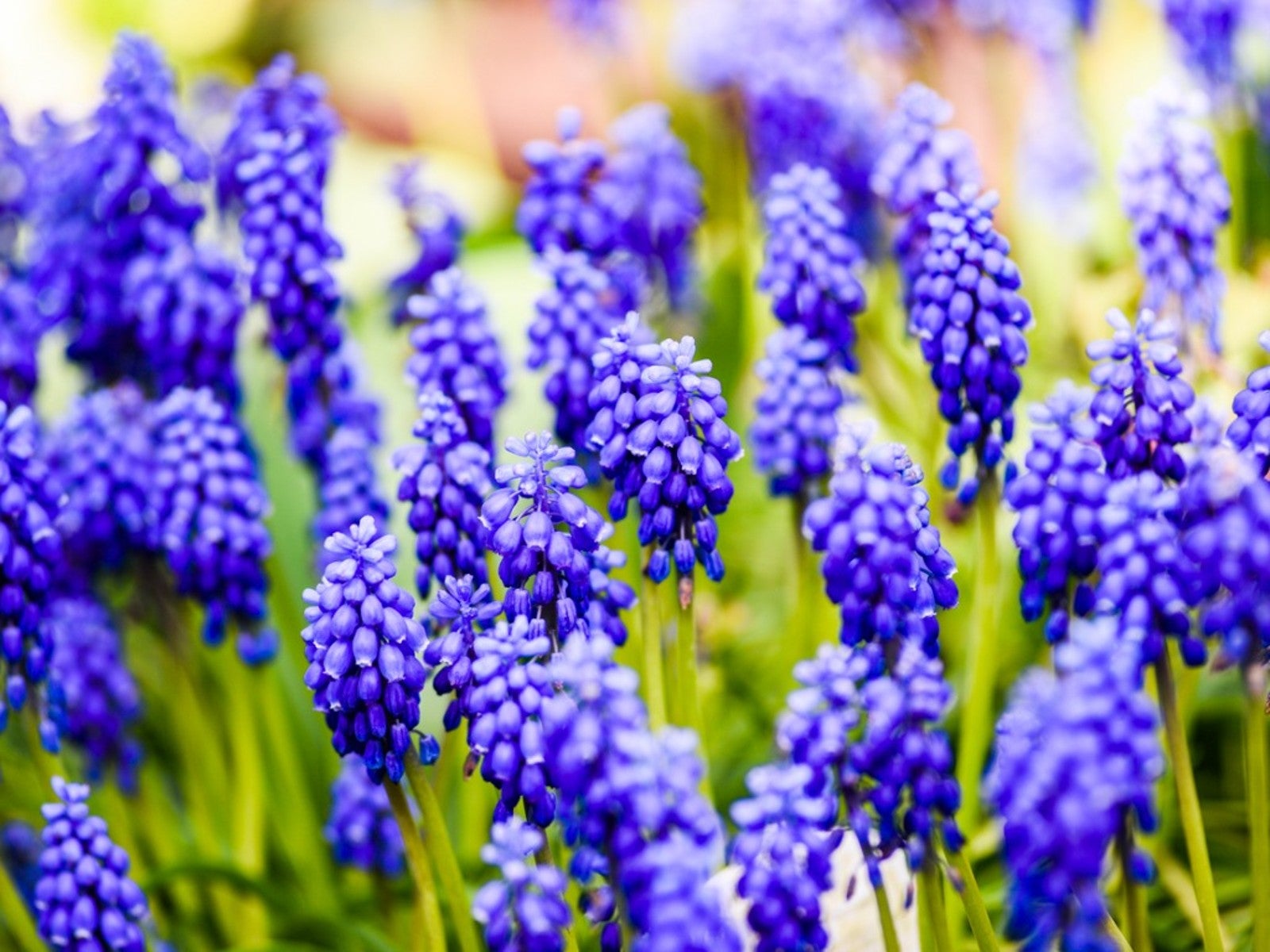Caring For Grape Hyacinth In Lawns: How To Naturalize Grape Hyacinth Bulbs


Some gardeners aren’t crazy about the idea of grape hyacinths popping up in a tidy lawn, but others love the carefree appearance of naturalizing grape hyacinths growing amid the grass. If you belong to the latter group, read on to learn how to naturalize grape hyacinth bulbs in your lawn.
Planting Grape Hyacinth Bulbs in Lawns
In general, planting grape hyacinth bulbs in lawns is about the same as planting bulbs in the flower bed; the only difference is that you’re working around existing turf. There are a couple of ways to go about planting the bulbs. The easiest method is simply to peel back small areas of turf with a spade or other cutting tool. Flip the corner of the turf, plant the bulbs underneath, and then replace the turf and tamp it gently. As long as you provide the area with a little water, the grass will grow back quickly. The second method is to punch a hole for each bulb, using a tool such as a narrow spade, bulb planter or a large screwdriver.
Naturalizing Grape Hyacinths
Naturalizing grape hyacinths, like any type of naturalizing flowers, involves planting the bulbs in an unplanned manner, Mother Nature style. The easiest way to accomplish this natural planting scheme is to simply scatter the bulbs in the area, and then plant them where they fall. If possible, dig in a little compost to improve drainage. However, grape hyacinth bulbs generally do well in existing soil as long as the turf isn’t hard packed. Once the bulbs are planted, grape hyacinths will spread freely and continue the naturalization process with no assistance.
Caring for Grape Hyacinths in Lawns
Like all bulbs, grape hyacinths recharge themselves by absorbing the sun’s energy through the leaves. Ideally, the tops shouldn’t be disturbed until they die down and turn yellow. This presents a challenge for hyacinths grown in lawns, as the grass generally is due for mowing while the tops are still green. Remember that your goal is a natural appearance – not a perfectly manicured lawn. However, if the untidy appearance is more than you can stand, the bulbs should do fine as long as you wait until blooming is completely finished. If the grape hyacinths are growing in patches, mow around the perimeters. Water the bulbs well during plant growth and blooming, then cut back when the foliage begins to turn yellow. Grape hyacinths in lawns require no additional care.
Sign up for the Gardening Know How newsletter today and receive a free copy of our e-book "How to Grow Delicious Tomatoes".

A Credentialed Garden Writer, Mary H. Dyer was with Gardening Know How in the very beginning, publishing articles as early as 2007.